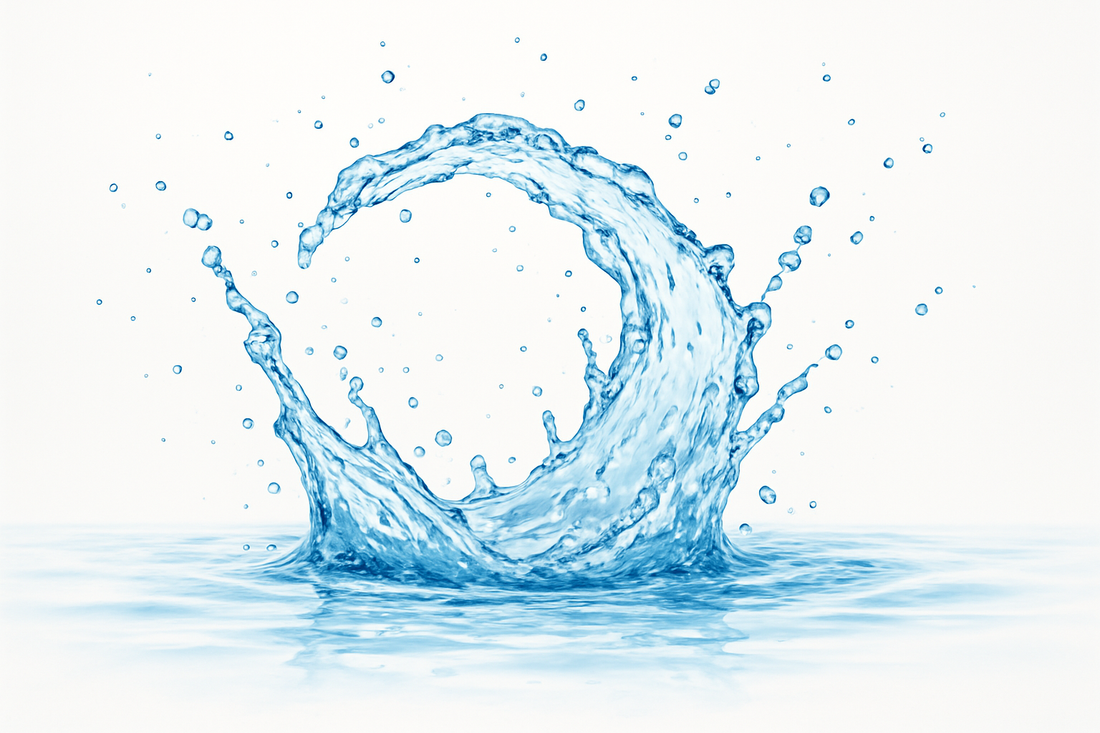
A beginner guide-External stimulation (clitoris)
Share
The Beginner's Guide to Clitoral Pleasure: Your Path to Easy, Safe Orgasms
So you're curious about clitoral stimulation? Smart choice. Let's cut through the noise: starting with external stimulation isn't just easier—it's biologically designed for pleasure, totally non-invasive, preserves virginity, and works with your body's natural wiring. Here's why:
- Easy orgasms: Your clitoris has 10,000+ nerve endings (O'Connell, 2005)—more than any body part. That's biological wiring for accessible pleasure.
- 100% safe & non-invasive: No penetration = zero pregnancy/STI risk (World Health Organization, 2023). Pure exploration, zero pressure.
- Virginity preserved: External play aligns with all definitions of virginity (Carpenter, 2001). Your body, your rules.
Ready to unlock pleasure on your terms? Let's dive in.
① Understanding Your Clitoral Anatomy: More Than a "Little Button"-Meet the Vulva

"OpenStax AnatPhys fig.27.10 - The Vulva - English labels" by OpenStax, license: CC BY. Source: book 'Anatomy and Physiology', https://openstax.org/details/books/anatomy-and-physiology.
Here's a simple breakdown:
- Prepuce (Clitoral Hood): A little protective fold that covers the clitoris.
- Glans Clitoris: The visible tip of the clitoris – small, sensitive, and a big player in sexual pleasure.
- Labia Minora and Labia Majora: Inner and outer “lips” of the vulva. These vary a lot in shape, size, and color from person to person.
- Urethral Opening: Where urine comes out.
- Vaginal Opening: Leads to the internal vagina. Note: Clitoral stimulation is different from vaginal stimulation.
- Bartholin’s Glands: They help with natural lubrication.
The clitoris is the star here. What you see on the outside is just the tip—inside, it's much bigger, with internal branches that hug your vaginal canal.
🔍 Fun fact: Your clitoris is solely for pleasure—no reproductive function (Lloyd, 2005). Evolution wants you to enjoy this.
② Preparation: Set the Stage for Success

Pleasure doesn’t begin with touch—it begins with feeling safe, relaxed, and fully present in your body. This moment is yours. Let it unfold gently.
🌙 Create the Optimal Environment
Think of this as creating a little sanctuary just for you—a space where pleasure is welcomed and pressure is left at the door.
✨ Lighting
Soft, warm lighting (think fairy lights or a bedside lamp) can soothe the nervous system and quiet any self-conscious thoughts. As Brotto (2018) suggests, a gentle glow helps you stay focused on sensation, not appearance.
🔒 Privacy
Give yourself at least 30 minutes where you won’t be disturbed. Silence your phone. Lock the door. This is your time—no obligations, no rush.
🛏️ Comfort
Lie on your back and tuck a soft pillow under your hips to slightly raise your pelvis. This opens up your body and makes touch feel easier and more natural.
🧴 Tools to Have Nearby
- A good water-based lubricant (this is your best friend!)
- Clean, warm hands or a washcloth
- Optional toys—only if you feel curious, not obligated
⏳ The Arousal Timeline (Let It Flow, Not Rush)
Your arousal is like a song—it builds, expands, pauses, and swells. There’s no stopwatch here. Just follow the rhythm that feels right for you.
🌿 There is no right way to feel aroused. There is only your way.
🌸 ③ Master Techniques: Step-by-Step

(And What Happens When You’re Aroused)
Pleasure isn’t about performance—it’s about tuning in. These techniques aren’t formulas to follow perfectly. They’re invitations to explore gently, curiously, and without pressure.
The Indirect Approach
Perfect for easing into sensation without overwhelming the clitoris.
- Begin with lubrication. Use your fingertips or palm to spread lube across your entire vulva—think of it as giving your body a welcome massage.
- Rest your palm gently on your mons pubis (the soft mound above the clit).
- Make slow, clockwise circles for about 2 minutes. Keep it light and steady, as if tracing calm ripples in water.
- Switch directions to counter-clockwise for another 2 minutes. Notice how the change feels.
- Slowly drift downward, letting your hand approach the clitoral hood—but not touching it directly yet. Let the anticipation build.
🌿 At this stage, arousal often brings warmth, subtle swelling, and heightened awareness. Let yourself linger there.
🌊 The Rolling Wave
A rhythmic technique that mimics the natural ebb and flow of arousal.
- Place your middle finger just above the clitoral hood and your index finger just below it.
- Apply soft, steady pressure—like holding a piece of silk between your fingers.
- Roll your fingers in opposite directions: while the index slides upward, the middle glides downward. Then reverse.
- Let the motion feel fluid, like a slow dance between your fingers and your body.
- Alternate speeds:
-
- 5 seconds of slow, sensual rhythm
- 10 seconds of slightly quicker movement
🎶 Think of this like music—varying the tempo creates anticipation, which heightens sensation.
🌼 The Hood Tug
A playful, teasing technique for when you feel more comfortable with direct stimulation.
- Gently pinch the clitoral hood between your thumb and index finger—only if it feels good.
- Apply soft downward pressure, enough to feel present but never too firm.
- Make tiny side-to-side motions, almost like shaking a thermometer. Let it feel light and rhythmic.
- Switch to gentle circular movements around the hood to keep things dynamic.
- If at any point it becomes too intense, pause or return to broader touch.
💡 As arousal builds, you may notice swelling, increased wetness, or a strong urge to press harder. Always adjust based on comfort—not urgency.
So… how do you know when you’re really turned on? (In detail)

Your body gives you signals—some subtle, some impossible to miss—that you’re getting into the mood. When you’re fully aroused, your body is basically saying: “Hey, I’m ready for more.”
Here’s what usually happens:
- The clitoris becomes engorged (swollen): Just like a penis, the clit fills with blood when aroused and may peek out more from under the clitoral hood. You might feel it pulsing or notice it's more sensitive to touch.
- The vulva changes color and shape: The labia may darken slightly in color and become puffier as blood flows to the area.
- Natural lubrication increases: Your vagina starts to self-lubricate—this is your body's way of prepping for penetration or more stimulation.
- Breathing quickens: You may notice your heartbeat and breath speeding up, even if you’re lying still.
- Tension builds in the pelvic area: You might unconsciously tense your thighs or pelvic floor muscles, getting ready for orgasm.
Pro tip: Everyone experiences arousal a little differently. Don’t rush it—take time exploring what feels good. Some people need more time or a certain mood to get fully there, and that’s 100% okay.
🔁 The Rolling Wave (Advanced Tingles)
- Middle finger above hood, index below
- Roll fingers like ocean waves
- Alternate speeds: 5 sec slow → 10 sec fast
🌡️ ④ Sensitivity-Specific Techniques
Everyone feels touch differently. Some bodies respond to the lightest breeze; others need deeper, steadier pressure. Neither is better—just beautifully unique.
How to Find Your Sensitivity
Close your eyes. Try light fingertip strokes across your vulva. If it tickles or overwhelms, you may be highly sensitive. If it feels faint or dull, you might benefit from stronger pressure.
🕊️ For High Sensitivity (Start Soft)
- The Tease: Touch for 10 seconds, then pause for 5—let anticipation build.
- Barrier Play: Stimulate through cotton panties or a soft towel.
- Waterfall Technique: Let warm shower water stream from ~12 inches away.
- Featherlight Touch: Glide fingers over skin like tracing fog on glass.
🔥 For Low Sensitivity (Add Depth)
- Firm Palm Press: Use the heel of your hand to press gently into the mons.
- Vibration Mapping: Trace slow circles around the vulva with a low-speed toy.
- Hot–Cold Play: Alternate a warm washcloth and a cool gel pack.
- Pulsing Rhythm: Use steady 1-second pressure pulses to awaken sensation.
🌿 Go at your pace. Sensitivity isn’t static—it can change with mood, cycle, or day.
⑤ Clitoris Toy Selection Guide: Match Your Style

How to Use This Chart
- If you’re very sensitive, start with sucking or vibrating toys on low—and use them over underwear if needed.


- If you need stronger stimulation, wands or firmer vibrators give you more power and coverage.


- Prefer indirect or teasing touches? Licking and sucking toys mimic oral sex best.



- Want precision control? Choose pinpoint toys. Crave fuller sensations? Go broad.
🧭 Still not sure where to start? We’ve got you—try our Pleasure Match Tool → to discover the toy that fits your body, mood, and curiosity.
⑥ Orgasm vs. Squirting: Demystified

Orgasm: Your Body's Firework Show
- Feels like: Waves of euphoria + muscle spasms (Komisaruk et al., 2011)
- Science: Brain floods with dopamine (Georgiadis et al., 2006)
- No climax? Normal! Stress/distraction disrupts it (Brotto, 2018)
When you orgasm through clitoral stimulation, you’ll likely feel a wave of intense pleasure that builds and peaks—then releases. It might feel like:
- Pulsing or contracting in the pelvic area
- A rush of warmth or tingling through your body
- A deep, satisfying exhale, like your whole body saying “Ahhh!”
Every orgasm is a little different. Some are quick and sharp, others are slow and rolling. And here’s the cool part: the clitoris is designed for repeat pleasure. Some people can have multiple orgasms in a row if they keep going.
Squirting: The Surprise
- What it is: Fluid release from Skene's glands (Salama et al., 2015)
- Feels like: "Unstoppable release" before orgasm
- Not squirting? 60% don't—it ≠ pleasure intensity (Jannini et al., 2010)
Some folks experience a gush of fluid during or after intense stimulation, often from the urethral area. This is called female ejaculation or squirting. Not everyone squirts—and it’s not required for a great orgasm—but if it happens, it’s perfectly normal.
According to a review in Sexual Medicine Reviews (2021), squirting is believed to come from the Skene’s glands, and the fluid is mostly water with traces of urea and creatinine—different from urine, but it exits through the same area.
If it happens to you, don’t stress—lay down a towel and embrace the moment. It’s just another way your body expresses pleasure.
⚠️ Key insight: Orgasm ≠ squirting. One can happen without the other!
What If You Don’t Orgasm/Squirt?

No worries!!! Not everyone reaches orgasm every time—or at all—and that’s okay. Reasons might include:
- Stress or anxiety
- Certain medications (especially antidepressants)
- Hormonal imbalances
- Lack of proper arousal or foreplay
- Past trauma or mental distractions
Orgasm is a journey, a physical phenomenon, not a destination. Focus on what feels good and connect with your body. The more you explore, the more you'll understand what works for you.
⑦ Common Mistakes & Fixes
-
Problem: Going straight for the glans
Solution: Spend 10-15 minutes warming up surrounding areas first (Basson, 2001) -
Problem: Inconsistent rhythm
Solution: Use metronome app starting at 60 BPM -
Problem: Too much pressure
Solution: Practice with a ripe banana - apply pressure just before it bruises -
Problem: Giving up too soon
Solution: Commit to 20+ minutes of stimulation before expecting results
⑧ Science-Backed Hacks
1. Stress Relief & Mood Boost
Orgasms release oxytocin, dopamine, and endorphins, which reduce cortisol (the stress hormone) and increase feelings of trust, calm, and connection.
Orgasms significantly reduce stress and increase emotional well-being (Brody & Krüger, 2006).
2. Better Sleep
Post-orgasm hormone shifts—especially oxytocin and prolactin—promote faster sleep onset and deeper rest.
Sexual activity before sleep improves sleep quality (Lastella et al., 2019).
3. Use Non-Dominant Hand to Increase Focus
Switching to your non-dominant hand forces your brain to slow down and concentrate more—helping you rediscover familiar sensations with greater intensity.
Novelty and attention increase sensory cortex engagement (Kilgard, 1998).
4. Temperature Trick
Warming your hands or toy to body temperature (98–100°F / 36.5–37.7°C) before touching increases comfort and blood flow. Cold surfaces can make your body tense up, while warmth invites softness.
Sensory studies show warm touch activates relaxation and pleasure pathways more effectively.
Final Words: Your Pleasure Journey Starts Now
Your clitoris is a direct line to reliable pleasure—no experience required. Tonight:
- Set mood (candles > harsh lights)
- Try Indirect Approach for 10 mins
- Notice what tingles...
This isn't performance. It's rewiring your relationship with pleasure—one touch at a time.
🌸 Remember: 85% need clitoral stimulation to orgasm (Herbenick, 2018). You're not "doing it wrong"—you're doing it right.
Scientific References
- Brody, S. (2010). The relative health benefits of different sexual activities. Biological Psychology.
- Brotto, L., et al. (2008). A mindfulness-based approach to women's sexual concerns. Journal of Sex Research.
- Cohen, J., et al. (2015). Breathing techniques and pelvic blood flow. Women's Health Reports.
- Goldstein, A. T., et al. (2020). The role of pelvic floor muscles in female sexual function.
- Herbenick, D., et al. (2018). Women’s reports of their preferred genital touch during partnered sex and solo masturbation.
- Kilgard, M. (1998). Cortical plasticity in sensory learning. Nature Neuroscience.
- Komisaruk, B., et al. (2004). The sensory neuroscience of orgasms. Journal of Sexual Medicine.
- Levin, R. J. (2006). Cognition and sexual arousal: Physiology of clitoral engorgement.
- Macefield, G., & Butler, J. (2015). Vascular response to thermal stimulation. Autonomic Neuroscience.
- Meston, C., & Buss, D. (2007). Why humans have sex. Archives of Sexual Behavior.
-
Wang, L., & Mouraux, A. (2021). Repetition and cortical sensory gain. Neuroscience Letters.


